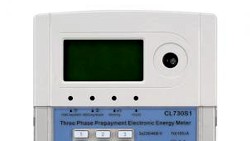Smart meters have revolutionized the electrical power industry by enabling proactive management of power consumption and facilitating efficient monitoring of electricity usage. To achieve these goals, power companies must carefully consider the choice of communication technology for their smart metering infrastructure.
Multiple communication technologies exist, each with its own set of advantages and disadvantages. In this article, we will explore the different communication technologies available for smart metering and discuss the factors that power companies should consider when making this crucial decision.
Communication Technologies for Smart Meters
The advancement of communication technologies for smart meters has brought about a significant transformation in how power companies handle and oversee electricity grids. This evolution has transitioned from manual meter readings to innovative communication solutions, allowing for efficient and instantaneous data collection, improved grid dependability, and heightened customer satisfaction. Power companies persistently explore and adopt the most appropriate communication technologies to optimize their smart metering infrastructure and adapt to the changing demands of the energy sector.
Below, you will find an overview of the most popular communication methods for smart meters in 2023.

Power Line Communication (PLC)
Power Line Communication utilizes the existing power distribution infrastructure to enable communication between smart meters and the utility company. It offers several advantages such as low deployment costs, as no additional infrastructure is required. Furthermore, PLC provides robust coverage, as power lines reach virtually every electrical connection. However, PLC is susceptible to interference and signal attenuation, particularly for remote areas or line conditions with poor quality.
Cellular Networks
Leveraging cellular networks for smart meter communication provides a wide coverage area, making it suitable for both urban and rural deployments. Cellular networks also offer reliable and real-time communication, with the ability to support a large number of devices simultaneously. On the downside, cellular networks require ongoing data costs and can be affected by network congestion during peak periods.
Radio Frequency (RF) Mesh
Mesh networks consist of interconnected smart meters, forming a self-healing wireless network. This technology offers excellent coverage, scalability, and reliability, as it creates multiple communication paths. Mesh networks are particularly suitable for large-scale deployments and can operate independently of external infrastructure. Nonetheless, the initial setup costs can be higher compared to other communication technologies.
NarrowBand IoT (NB-IoT)
NarrowBand Internet of Things (NB-IoT) is a communication technology specifically designed for low-power, wide-area applications, making it an attractive option for smart metering. The benefits of NB-IoT include long battery life, extended coverage range, and strong signal penetration, enabling seamless connectivity even in remote areas. However, potential disadvantages of NB-IoT include limited bandwidth capacity, slower data rates, and higher deployment costs compared to other communication technologies.
Long Range Wide Area Network (LoRaWAN)
LoRaWAN (Long Range Wide Area Network) is a low-power, wide-area communication protocol that offers several advantages for smart metering applications. The benefits of LoRaWAN include its long-range capabilities, enabling cost-effective connectivity over large geographic areas. It also boasts low power consumption, extended battery life, and excellent signal penetration through buildings and urban environments. However, LoRaWAN's main drawback is its lower data transmission rates compared to other communication technologies, making it less suitable for applications requiring real-time data or high-bandwidth requirements. Power companies should carefully evaluate these pros and cons to determine if LoRaWAN is the right fit for their specific smart metering needs and infrastructure.
Zigbee
Zigbee is another used communication technology in the realm of smart metering, offering a range of benefits for power companies in their grid management efforts. One of the key advantages of Zigbee is its low power consumption, enabling smart meters to operate for extended periods without frequent battery replacements. Additionally, Zigbee's mesh networking capabilities allow for reliable and robust connectivity within a network, even in large-scale deployments. However, while Zigbee provides reliable communication, its limited range may require additional infrastructure and network repeaters. Furthermore, interoperability challenges can arise when integrating Zigbee-enabled devices from different manufacturers.
Ethernet
Ethernet is a communication method that offers several advantages for smart metering applications, especially in the distribution segment, in terms of reliability and high-speed data transfer. By leveraging existing wired networking infrastructure, Ethernet provides stable connectivity and robust performance for real-time data collection and monitoring. Its wide bandwidth capacity allows for fast and efficient transmission of large volumes of data.
However, one potential drawback of Ethernet is the necessity of physical connections, which may restrict flexibility in terms of meter placement. Additionally, Ethernet requires proper installation and maintenance, and its availability is dependent on the presence of wired network infrastructure.
Factors to Consider in the Decision-Making Process
When selecting a communication technology for smart meters, power companies must evaluate several crucial factors:
Coverage and Range
Consider the coverage requirements of the smart metering infrastructure. Does it need to cover both urban and remote areas? Some technologies, like cellular networks and LPWAN, offer wide coverage, while PLC and mesh networks are suited for localized deployments.
Reliability and Security
Ensure the communication technology provides secure and reliable data transmission. Encrypting data and implementing robust authentication protocols are crucial for maintaining data integrity and protecting customer privacy. Evaluate the reliability of the technology by considering factors such as network availability, resistance to interference, and redundancy.
Cost and Scalability
Evaluate the initial deployment costs, ongoing operational expenses, and scalability potential of each technology. Consider factors such as the need for additional infrastructure, data costs, maintenance requirements, and the ability to accommodate future growth and increased demand.
Bandwidth and Latency
Consider the data transfer requirements for the smart metering applications. Determine if real-time data is crucial or if a delay in communication is acceptable. Technologies like RF and cellular networks provide high bandwidth and low latency, while LPWAN may be more suitable for low-data rate applications.
Integration with Existing Infrastructure
Evaluate the compatibility of the chosen communication technology with existing infrastructure, back-end systems, and customer premises. This will minimize deployment complexities and improve the overall efficiency of the system. Technologies like PLC can integrate well with existing infrastructure, while cellular networks require proper integration with backend systems.
Takeaway
The choice of communication technology for smart metering is a critical decision that power companies must make to optimize their grid management and meet customer expectations. By carefully considering factors such as coverage, reliability, cost, scalability, and integration, power companies can select the most suitable technology for their specific needs. Undoubtedly, making an informed decision regarding communication technology will contribute to a successful and future-proof smart metering infrastructure, leading to enhanced electricity distribution and improved customer satisfaction.
If you have any queries about our smart meters and communication methods, feel free to reach out to us. With over 20 years of experience in integrating smart meters, our team of experts is available to provide you with answers and assistance.
Editor's note: This article was originally published in July 2023 and has been updated for comprehensiveness.





All comments are moderated before being published. Inappropriate or off-topic comments may not be approved.